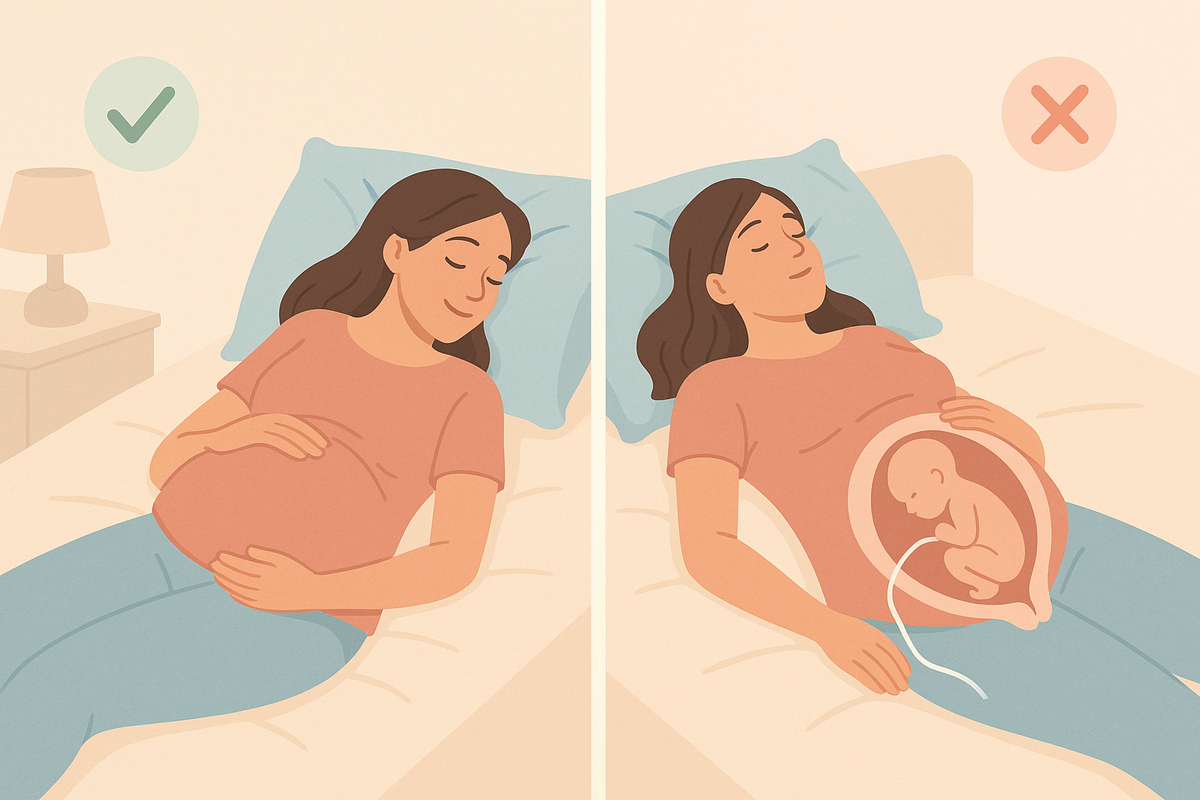
Pros & Cons of Sleeping on Your Back During Pregnancy
|
|
Time to read 4 min
|
|
Time to read 4 min
Back sleeping is a familiar, comfortable position for many people. In early pregnancy, it usually feels fine. As pregnancy progresses, though, your body changes and so does the guidance on sleep positions. You may have heard that back sleeping becomes less safe later on—so how do you weigh the pros and cons and still get a good night’s rest?
This guide breaks down the benefits and drawbacks of sleeping on your back during pregnancy, what the research and clinicians advise, and simple changes that keep sleep both safe and comfortable. For a full safety overview, also see: Is Back Sleeping Safe During Pregnancy?
Let’s start with the positives—because there are some, particularly earlier in pregnancy:
From the second trimester, lying flat on your back can place more pressure on major blood vessels and organs. That can lead to:
There’s also evidence that going to sleep on your back in late pregnancy is associated with a higher risk of stillbirth (see research below). The overall risk remains low, but guidance generally encourages side sleeping as a precaution.
Multiple case-control studies in the UK and New Zealand suggest that the position you settle to sleep in matters. The large UK MiNESS study reported that women who went to sleep on their backs after 28 weeks had at least twice the risk of late stillbirth compared with women who settled on their side (Sands – MiNESS study summary). While absolute risk is small, many services advise side sleeping from mid-pregnancy onward.
Remember: if you wake up on your back, don’t panic—simply roll onto your side. It’s the position you go to sleep in most of the time that appears to drive the risk difference.
If back sleeping is your default, try these adjustments that protect circulation while preserving comfort:
Support is the difference between “I can’t get comfy” and “I slept well.” Pregnancy pillows help by:
Popular options include U-shaped pillows, C-shaped pillows, and compact wedges, all designed to make side sleeping feel natural.
Is back sleeping always unsafe?
No. It’s generally fine early on. After about 20 weeks, side sleeping is recommended as a precaution.
What if I wake up on my back?
Simply roll onto your side. Short periods are unlikely to cause harm—the priority is the position you start the night in.
Can I sleep propped up on my back?
Yes. Semi-reclined (not flat) reduces vessel compression and can ease reflux.
Which side is best?
The left side is often recommended for circulation, but the right side is also safe compared with lying flat on your back.
I can’t get comfy on my side—what now?
Try different setups (U-shaped, C-shaped, or wedges) and place a pillow between your knees. See: Transitioning to Side Sleeping.
Back sleeping has some early-pregnancy upsides, but by mid-to-late pregnancy the risks and discomforts usually outweigh them. Most experts advise settling to sleep on your side—ideally with supportive pillows—so you protect circulation and still rest well. With a few tweaks, side sleeping becomes second nature.
For extra comfort and support, explore our pregnancy pillows, then read: Is Back Sleeping Safe During Pregnancy?
Disclaimer: This article is for informational purposes only and is not a substitute for professional medical advice. Always consult your doctor or midwife for personalised guidance.